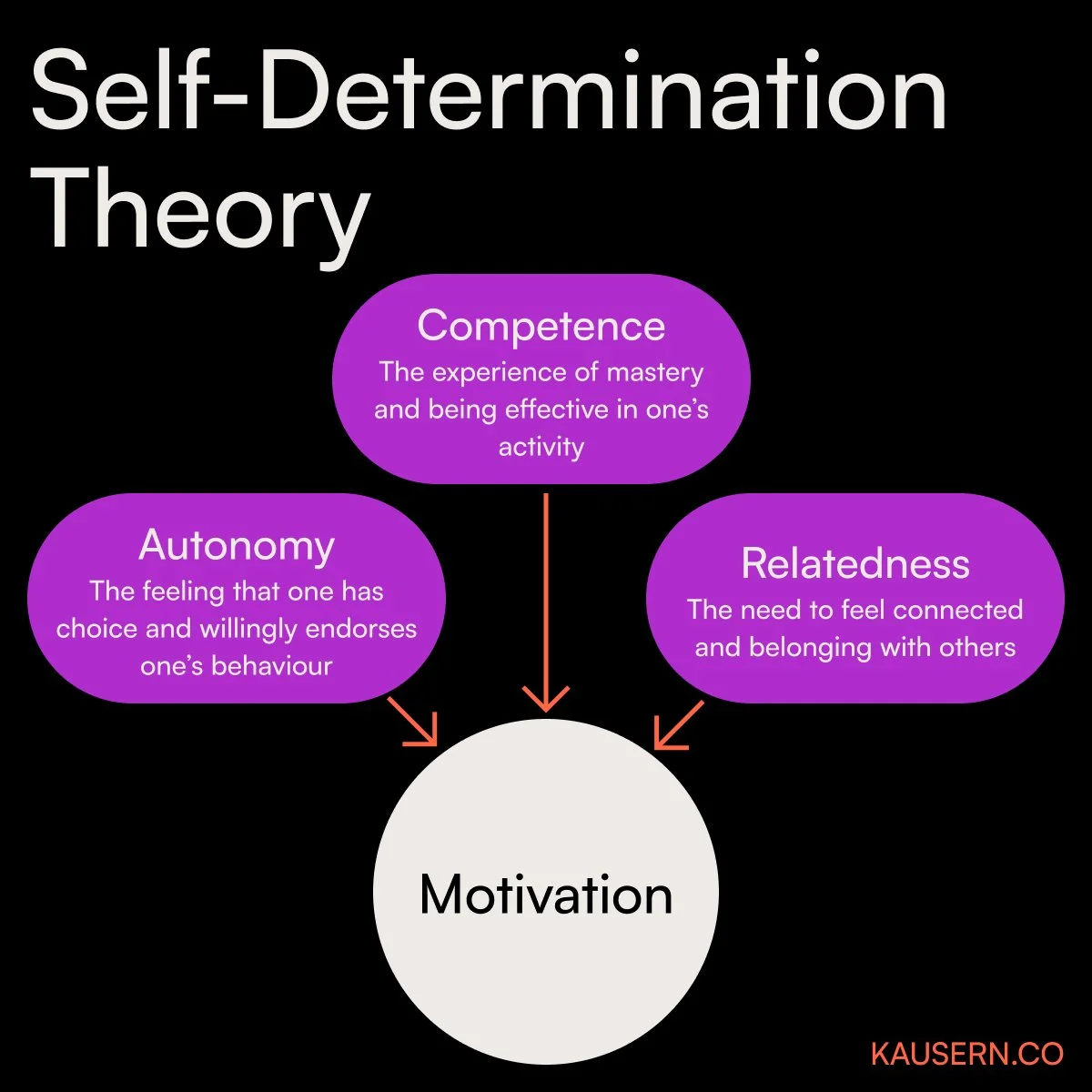Self-Determination Theory
“How do you motivate your employees?”
This is one of the most common questions I’m asked about effective leadership. Most managers think they can motivate their team to work, but here’s the truth: You can’t motivate anyone. Motivation is commonly misunderstood and is a source of much frustration for young managers at the workplace.
When motivation fails, all that’s left for us to do is get employees to do things. Is there a difference? Well, yes. When we order someone to do something, we have to monitor and even give them a push sometimes. But pushing is no way to work with people, especially in a creative field. It’s not sustainable.
Now, self-motivation is a different story.
Self-motivators are different because their intrinsic motivators power them to perform. Ideally, at least 70% of our employees are self-motivated. Enter the Self-Determination Theory.
SDT is a framework that explains human motivation and personal development. According to SDT, all of us have three key psychological needs (see image).
When these needs are met, individuals tend to be more motivated, engaged, and productive in the workplace. As leaders, our job is to understand and apply SDT by creating a work environment that will foster these three psychological needs to drive job satisfaction.
Autonomy
Autonomy refers to the feeling of having control over one's own work and being able to make decisions that impact their work.
Provide autonomy by delegating tasks and responsibilities to employees and allowing them to work independently. When employees have autonomy, they are more likely to feel a sense of ownership over their work, which can increase their motivation to perform well.
Competence
Competence refers to the feeling of being capable and effective in one's work.
Provide opportunities for skill development by offering training and development programs, giving consistent feedback, and providing challenging work assignments. When employees feel competent in their work, they are more likely to be motivated and engaged.
Relatedness
Create a motivational work environment by fostering a sense of relatedness among employees ie. a sense of belonging. Achieve this by creating opportunities for social interaction, nurturing teamwork, and creating an overall positive work culture. When employees feel a sense of relatedness, they are more likely to be motivated and engaged in their work.
So, no, you cannot motivate your employees. But what you can do is understand and apply Self-Determination Theory to create a motivational work environment for them to devise their own motivation. Studies have shown that employees working in such an environment are more likely to foster job satisfaction and just feel better overall. ●

